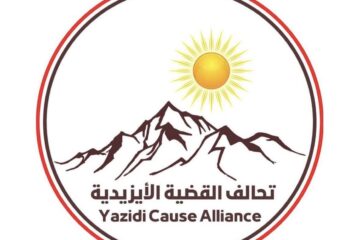The Unique Identity of the Yezidis (Ezidis) and Their Distinction from the Kurds
The Yezidis, also known as Ezidis, are an ethnic people predominantly residing in the Middle East, including Iraq, Syria, Turkey, and Armenia. Despite sharing geographical proximity and some linguistic similarities with the Kurds, the Yezidis are a distinct and separate group with their own unique identity. In this article we explain the multifaceted reasons why the Yezidis should not be mixed with the different people who see themselves as “Kurdish”. The most evident differences are the historical, religious, cultural, linguistic, and socio-political features that make the Yezidis unique.

Historical and Religious Distinctions
To understand the distinct identity of the Yezidis, it is crucial to consider their historical background. The Yezidis’ history predates the recent concept of Kurdish identity. The Yezidis’ roots can be traced to ancient Mesopotamia, an area known for its diverse and ancient religious traditions.
One of the most prominent factors differentiating the Yezidis from the Kurds is their distinct religious beliefs and practices. The emergence of the Yezidis and their religion (sharfadin) predates the rise of the recent Kurdish identity. Sharfadin represents a unique faith that defies easy categorization. While it contains similar elements to the Abrahamitic religions and other faiths, it also incorporates indigenous Mesopotamian and Zoroastrian beliefs. Futhermore, the Yezidis have their own religious practices and rituals, including pilgrimages to holy sites such as the Lalish temple in Iraq. These rituals are unique to Sharfadin and are not part of Kurdish practices.
Scholars like Philip Kreyenbroek emphasize that the Yezidi religion, which has its roots in Mesopotamian and pre-Islamic Zoroastrian beliefs, is distinct from Islam, Kurdish Islam, and other regional faiths.
Cultural Uniqueness
Cultural differences further underscore the distinction between the Yezidis and the Kurds. The Yezidis have developed their own unique cultural practices, customs, and traditions that reflect their historical and religious background.
One notable aspect of Yezidi culture is their traditional clothing, which is distinct from Kurdish attire. Yezidis often wear colorful robes and headgear that carry cultural and religious significance. Yezidis also have their own music and dance traditions that are distinct from Kurdish cultural expressions. These artistic forms serve to reinforce their unique cultural identity.
Linguistic Considerations
While it is true that Yezidis speak ezdiki and Kurds claim it to be their “kurdish” (kurmanji) language, a similar or shared language does not negate the existence of distinct identities. Without even comparing ezdiki and kurmanji, we need to ask ourselves whether a (one) kurdish language exists. In fact, when examining the languages which people who claim to be Kurdish speak, it is evident that kurdish is referred to several languages that are spoken by people who view themselves as Kurds. Although this topic can be examined deeper (we will probably publish an article about this topic in the future), Kurdish people speak several languages and have incorrectly labelled these distinct languages as different dialects of “Kurdish”.
Different people from different ethnicities have consistently been forced to convert to Islam, they have kept their mother tongue. In other words, “Kurds” today consist of people who (previously) belonged to other ethnic, religious, cultural and linguistic groups who converted to Islam and developed their current identify as Kurds. However, the linguistic bond is still evident with their preceding group. In the case of ezdiki and “Kurmanji”, Kurmanji is spoken by people who previously were Yezidis but who have been forcefully converted to Islam. Therefore, Kurmanji has derived from ezdiki and it has inherited some new element due to the influence from mainly Arabic and Turkish.
A similar example is the relations between Hindi and Urdu. Urdu has derived from Hindi in the same way as Kurmanji has derived from Ezdiki. Despite this, no Pakistani would claim that the population in India speaks Urdu instead of Hindi. However, for some reason the Kurds consider that the Yezidis speak their language (Kurdish) and not the other way around (kurds who speak Ezdiki, the language of the Yaidis). Although this distinction of order might seem as a competition about “who was first” and has more “ancient roots”, it is important to name things as they are and not what the majority want them to be. Although, the Yezidi voices are outnumbered by the much bigger population of Kurmanji speakers, its important to not be part of the force which tries to exterminate the ancient Yezidi people.
Persecution and Marginalization

Throughout history, the Yezidis have faced persecution and marginalization in the regions where they reside. This persecution is often rooted in their religious beliefs and distinct identity. The Yezidis have been subjected to discrimination, violence, and forced conversions, leading to their historical experiences of marginalization. One of the most devastating examples of Yezidi persecution is the Yezidi Genocide of 2014 by the Islamic State (ISIS). Thousands of Yezidis were systematically targeted, killed, and enslaved by ISIS militants due to their religious beliefs. This tragic event serves as a stark reminder of the unique identity and vulnerabilities of the Yezidis.
In conclusion, the Yezidis, or Ezidis, are an ethnoreligious people with a unique identity that sets them apart from the Kurds and other populations in the Middle East. While they share geographical proximity and linguistic similarities with the Kurds, their historical roots, religious beliefs, cultural practices, linguistic nuances, geographical dispersion, and experiences of persecution all contribute to their separate identity.
Recognizing the distinctiveness of the Yezidis is crucial for fostering a more comprehensive understanding of the diversity present in the Middle East and promoting tolerance, inclusivity, and peaceful coexistence in the region.
It is important to acknowledge and respect the individuality of the Yezidis while appreciating the shared history and cultural interactions that characterize the complex tapestry of the Middle East.


0 Comments